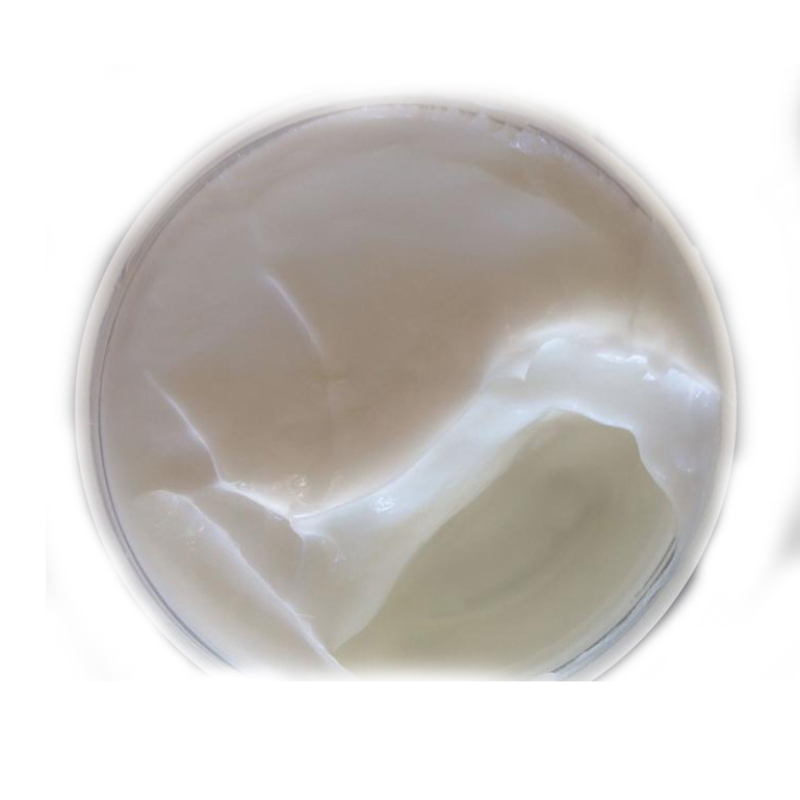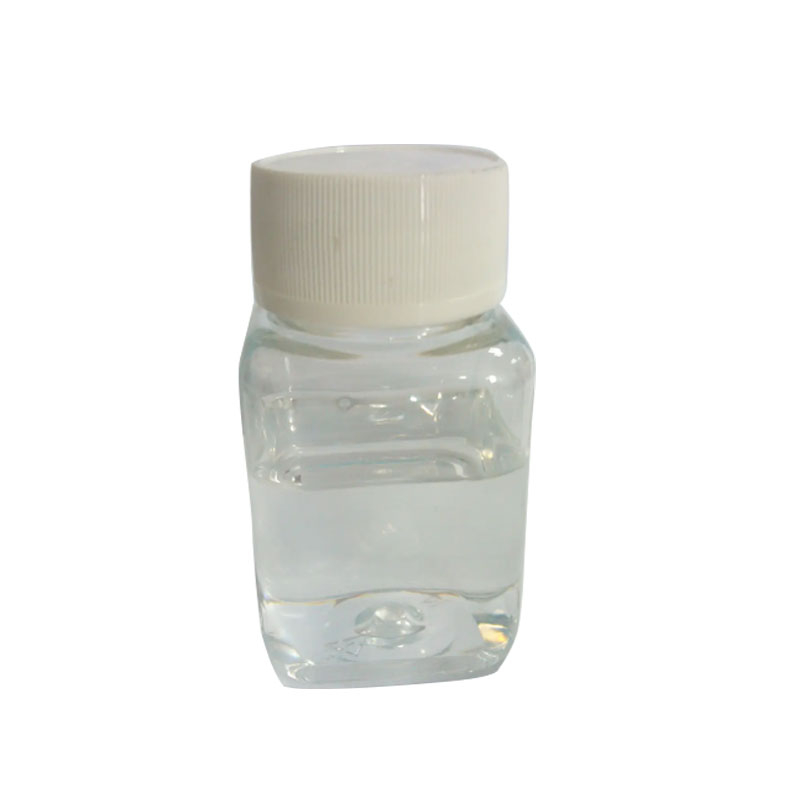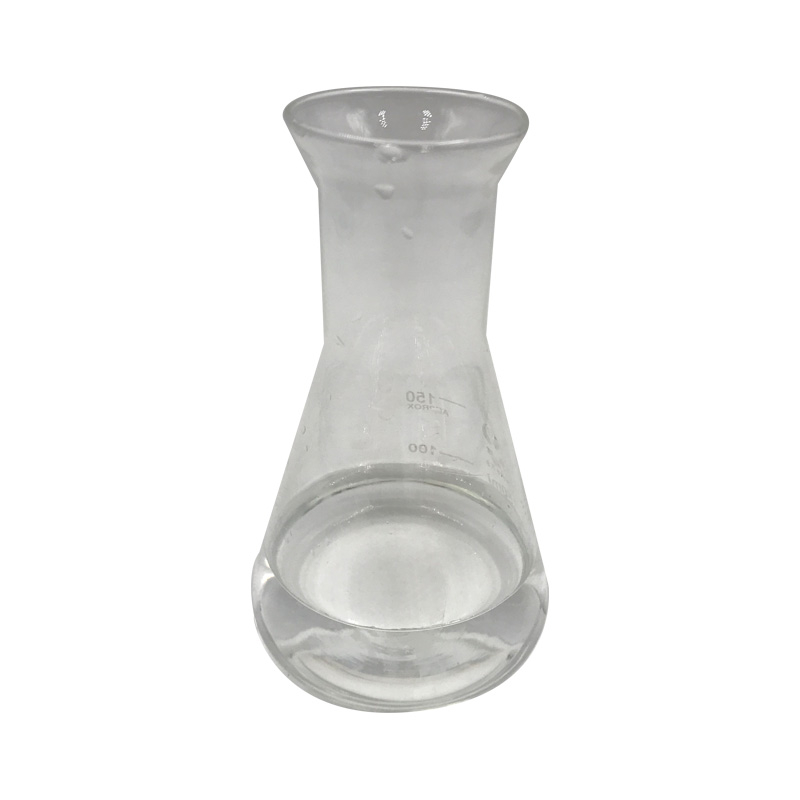Products Description of Imidazo[1,2-b]pyridazine CAS#766-55-2Imidazolo[1,2-b]pyridazine can be used as a pharmaceutical synthesis intermediate, and can be prepared from 3-pyridazine as a reaction raw material and 2-chloroethylamine hydrochloride, and can be used to prepare 3-ethynylimidazo[1,2-b]pyridazine, an intermediate of ponatinib.Imidazo[1,2-b]pyridazine CAS#766-55-2 Chemical PropertiesMelting point 54℃density 1.29±0.1 g/cm3(Predicted)storage temp. Inert atmosphere,Room Temperaturesolubility Soluble in dimethylformamide.form powder to crystalpka5.30±0.30(Pre
Contact Now
Products Description of Bitertanol CAS#55179-31-2The pure product is a colorless crystalline solid. m.p. 125~129℃ (diastereomer A is 136.7℃, B is 145.2℃, and the low eutectic of A and B is 118℃). The vapor pressure at 20℃ is <1.0×10-3Pa [A is 3.8×10-3Pa, B is 3.2×10-3Pa (100℃)]. Solubility at 20℃: dichloromethane 100-200g/L (A is 200-500g/L, B is 50-100g/L), isopropanol 30-100g/L [20-50g (A or B)/L], toluene 10-30g/L [A is 10-20g/L, B is 1-2g/L], n-hexane 1-10g/L [≤10g (A or B)/L], water 5mg/L [2.9mg (A)/L, 1.6mg (B)/L]. Partition coefficient 126000 (A), 25000 (B).
Contact Now
Products Description of Tris(2-methyl-1-aziridinyl)phosphine oxideCAS#57-39-6It is mainly used as a crosslinking agent and curing agent for the resin coating of missiles.
Contact Now
Products Description of 6-CHLOROIMIDAZO[1,2-B]PYRIDAZINE-2-CARBOXYLIC ACID CAS#14714-24-06-Chloromidazo[1,2-B]pyridazine-2-carboxylic acid can be used to prepare compounds which can be used as active pharmaceutical substances, in particular Trk antagonists, i.e. they block the intracellular kinase activity of Trk, e.g. TrkA (NGF) receptors. Tropomyosin-related kinases (Trks) are a family of receptor tyrosine kinases activated by neurotrophic factors. Trks play an important role in pain perception and in tumor cell growth and survival signaling.
Contact Now
Products Description of Chloramine B CAS#127-52-6Chloramine B hydrate is a white crystalline powder.Chloramine B Chemical PropertiesMelting point 190°CBoiling point 189℃[at 101 325 Pa]density 1.484[at 20℃]vapor pressure 0Pa at 20℃storage temp. Keep in dark place,Inert atmosphere,2-8°Csolubility H2O: 0.1 g/mL, clearform solidpka1.88[at 20 ℃]Water Solubility 0.1 g/mLMerck 14,2074BRN 3599287InChIKeyKDNCILYKSYKEFJ-UHFFFAOYSA-NLogP0.14 at 26℃EPA Substance Registry SystemChloramine B (127-52-6) Safety InformationHazard Codes CRisk
Contact Now
Products Description of Potassium methyl siliconate CAS#31795-24-1potassium methylsilanetriolate Chemical PropertiesBoiling point 112℃[at 101 325 Pa]density 1.388[at 20℃]Specific Gravity1.29Hydrolytic Sensitivity0: forms stable aqueous solutionsLogP0.780 (est)EPA Substance Registry SystemSilanetriol, methyl-, potassium salt (31795-24-1)Product Application of Potassium methyl siliconate CAS#31795-24-1Methylsilanetriol potassium salt is mainly used as surface treatment agent and catalyst.
Contact Now
Products Description of 4-Methyl-2-pentanone CAS#108-10-14-Methyl-2-pentanone (methyl isobutyl ketone) reagent is widely used as a solvent in chemical and pharmaceutical industries, separation and recovery of nuclear fission products, and scientific research experiments. The content of 4-methyl-2-pentanone sold on the market is ≤99%, and it contains a small amount of impurities such as alcohol, acidic substances and water. 4-Methyl-2-pentanone is used as a solvent for nitrocellulose, lacquer, and certain polymers and resins.
Contact Now
potassium methylsilanetriolate Chemical PropertiesBoiling point 112℃[at 101 325 Pa]density 1.388[at 20℃]Specific Gravity1.29Hydrolytic Sensitivity0: forms stable aqueous solutionsLogP0.780 (est)EPA Substance Registry SystemSilanetriol, methyl-, potassium salt (31795-24-1)Product Application of Potassium methyl siliconate CAS#31795-24-1Methylsilanetriol potassium salt is mainly used as a surface treatment agent and catalyst. It can be used to improve the wettability, water resistance and wear resistance of materials.
Contact Now
Products Description of 2-Amino-2-methyl-1-propanol CAS#124-68-5White crystal block or colorless liquid. Miscible with water, soluble in alcohol, irritating to eyes and skin. There is the synthesis of surfactants. Vulcanization accelerator. Acid gas absorbent.
Contact Now
Products Description of SODIUM METHYL COCOYL TAURATE CAS#12765-39-8Sodium Methyl Cocoyl Taurate (SMCT), also known as sodium methyl coconut taurate and sodium methyl coconut taurate, has a chemical structure of RCON (CH3) CH2CH2SO3Na. It is an amino acid surfactant, a milky white viscous paste at room temperature, a 1% aqueous solution with a pH of 6.5-9.0, active matter >38%, coconut oil soap <2%, and color (APHA) ≤300. It is a milder surfactant than SLS, less irritating to the skin, and has good cleaning power.
Contact Now
Products Description of Chloramine B 99% CAS#127-52-6Chloramine B, also known as sodium benzenesulfonyl chloride, is a white crystalline powder. It is explosive when exposed to impact, friction, fire or other ignition sources.
Contact Now
2-Methyl-1-propanol CAS#78-83-1Isobutanol, additionally recognised as isopropyl alcohol or 2-methyl propanol, is a colorless and flammable liquid. It is one of the most important components of clean tea leaves, black tea and inexperienced tea to produce the top notch aroma. The molecular weight of isobutanol is 74.12, with a boiling factor of 107.66 ℃, a relative density of 0.8016, a refractive index of 1.3959, and a flash factor of 37 ℃.
Contact Now
Products Description of N-Methyl-2-pyrrolidone CAS#2687-44-7N-methyl-2-pyrrolidone is a nitrogen-containing five-membered heterocyclic compound. It has a wide range of applications due to its following excellent properties: It has high polarity and is completely miscible in most organic solvents (alcohols, ethers, ketones, aromatic hydrocarbons, chlorinated hydrocarbons, etc.). It has high solubility in organic and inorganic substances. It can be miscible with water in any proportion. It has a higher flash point than other similar solvents.
Contact Now
Products Description of 5-CHLORO-3-METHYLBENZO[B]THIOPHENE CAS#19404-18-33-Methyl-5-chlorobenzothiophene is a pharmaceutical intermediate. 5-CHLORO-3-METHYLBENZO[B]THIOPHENE CAS#19404-18-3 Chemical PropertiesMelting point 33 °CBoiling point 87 °Cdensity 1.293±0.06 g/cm3(Predicted)storage temp. 2-8°Csolubility soluble in Methanolform powder to lumpcolor White to Yellow to OrangeCAS DataBase Reference19404-18-3(CAS DataBase Reference)Safety InformationHazard Codes Xi,XnRisk Statements 36/37/38-22Safety Statements 26-37/39Hazard Not
Contact Now
Products Description of 5-Methyl-2-Thiophenecarboxylic Acid CAS#1918-79-25-Methyl-2-Thiophenecarboxylic Acid is a colorless, transparent liquid with a melting point of 136-138°C.5-Methyl-2-Thiophenecarboxylic Acid Chemical PropertiesMelting point 135-138 °C(lit.)Boiling point 229.75°C (rough estimate)density 1.365 (estimate)refractive index 1.5300 (estimate)storage temp. 2-8°C(protect from light)pka3.71±0.10(Predicted)form Liquidcolor ClearBRN 113857CAS DataBase Reference1918-79-2(CAS DataBase Reference)NIST Chemistry Reference5-Methyl-2-thioph
Contact Now
Products Description of Dibenz[b,f]azepine-5-carbonyl chlorideCAS#33948-22-0Crystallization (toluene).
Contact Now
Products Description of Carnitine CAS#541-15-1Carnitine is a type of B vitamins. Its structure resembles amino acids, so some people classify it as amino acids. Its main function is to help transport long-chain fatty acids to provide energy. This can prevent fat from accumulating in the heart, liver and skeletal muscle. Artificially synthesized carnitine has three forms: L-isomer, D-isomer and racemate, and L-carnitine has the best effect. L-carnitine is a compound with multiple physiologically active functions.
Contact Now
Products Description of Propiconazole CAS#60207-90-1he triazole compound propiconazole (Pcz), 1-[[2-(2,4- dichlorophenyl)-4-propyl-1, 3-dioxolan-2-yl]methyl]-1,2,4-triazole, is a kind of triazole fungicide (Fig. 1). It is used extensively in a variety of applications. It is used on grasses grown for seed, mushrooms, corn, wild rice, peanuts, almonds, sorghum, oats, pecans, apricots, peaches, nectarines, plums and prunes.
Contact Now
N-B-HYDROXYETHYL OLEYL IMIDAZOLINE CAS#95-38-5It is widely used in the process of oil and natural gas extraction, gathering and transportation, and in the atmospheric and vacuum, catalytic cracking, hydrofining, hydrocracking and other devices of refineries to prevent corrosion of metal equipment.
Contact Now
Products Description of Methyl 3-amino-4-methylthiophene-2-carboxylate CAS#85006-31-1Methyl 3-amino-4-methylthiophene-2-carboxylate is an organic raw material.Methyl 3-amino-4-methylthiophene-2-carboxylate CAS#85006-31-1 Chemical PropertiesMelting point 85-88 °C (lit.)Boiling point 318.6±37.0 °C(Predicted)density 1.264±0.06 g/cm3(Predicted)Fp >100°Cstorage temp. Keep in dark place,Sealed in dry,Room Temperaturesolubility Chloroform (Slightly), Methanol (Slightly)pka1.71±0.10(Predicted)form Solidcolor Pale YellowWater Solubility 1g/L at 35℃BR
Contact Now
Products Description of Methyl Tributyl Ammonium Chloride CAS#56375-79-2Methyltributylammonium chloride, also known as tributylmethylammonium chloride, has a molecular formula of C13H30ClN, a molecular weight of 235.84, and a CAS registration number of 56375-79-2.
Contact Now
Products Description of BISPHENOL A ETHOXYLATE DIMETHACRYLATE CAS#41637-38-1Colorless liquidBISPHENOL A ETHOXYLATE DIMETHACRYLATE Chemical Propertiesdensity 1.12 g/mL at 25 °C(lit.)refractive index n20/D 1.532Fp >230 °Fstorage temp. 2-8°CEPA Substance Registry SystemPoly(oxy-1,2-ethanediyl), .alpha.,.alpha.'-[(1-methylethylidene)di-4,1-phenylene]bis[.omega.-[(2-methyl-1-oxo-2-propenyl)oxy]- (41637-38-1)Safety InformationHazard Codes XiRisk Statements 36/37/38-43Safety Statements 26-36WGK Germany 3 Factory and Equ
Contact Now
Products Description of Methyl 3-amino-2-pyrazinecarboxylate CAS#16298-03-6The molar refractive index of methyl 3-aminopyrazine-2-carboxylate is 38.44, the molar volume (m3/mol) is 116.0, the isotonic volume (0.2K) is 326.2, the surface tension (dyne/cm) is 62.4, and the polarizability (10-24cm3) is 15.24.Methyl 3-amino-2-pyrazinecarboxylate Chemical PropertiesMelting point 169-172 °C (lit.)Boiling point 300.8±37.0 °C(Predicted)density 1.319±0.06 g/cm3(Predicted)storage temp. Keep in dark place,Sealed in dry,2-8°Csolubility Chloroform, Methanolform Crystallin
Contact Now
Products Description of N-Methyl-2-pyrrolidone CAS#872-50-4N-Methylpyrrolidone is referred to as NMP, molecular formula: C5H9NO, English: 1-Methyl-2-pyrrolidinone, appearance is colorless to light yellow transparent liquid, slightly smell of ammonia, miscible with water in any proportion, soluble in ether, acetone And various organic solvents such as esters, halogenated hydrocarbons, aromatic hydrocarbons, etc., almost completely mixed with all solvents, with a boiling point of 204°C and a flash point of 91°C. It has strong hygroscopicity and stable chemical properties.
Contact Now


![Imidazo[1,2-b]pyridazine CAS#766-55-2](https://d3rnfhc14zcmdf.cloudfront.net/cdn/ff/0zOUVGs0O2UNKg1sLuyBEd5hRn1Q9iSLX8YfXSek5M4/1720183747/public/styles/chanpinzhutu/public/2024-07/16-1_2.jpg?itok=yIuJQIIN)


![6-CHLOROIMIDAZO[1,2-B]PYRIDAZINE-2-CARBOXYLIC ACID CAS#14714-24-0](https://d3rnfhc14zcmdf.cloudfront.net/cdn/ff/vbP0AMU1SZWoeuPOBqSMI1QHHcX8Iq0KlluvtoZIwQw/1717571201/public/styles/chanpinzhutu/public/2024-06/%E9%BB%84%E8%89%B2%E9%A2%97%E7%B2%92%20%283%29_0.jpg?itok=ni7182_2)









![5-CHLORO-3-METHYLBENZO[B]THIOPHENE CAS#19404-18-3](https://d3rnfhc14zcmdf.cloudfront.net/cdn/ff/SQtnDOdiT42PpMs1NszZi7Tv_d_DUIp_Dx3j0P5hPM4/1720092385/public/styles/chanpinzhutu/public/2024-07/%E5%BE%AE%E4%BF%A1%E5%9B%BE%E7%89%87_20240702152530_3.jpg?itok=CrylVEjT)

![Dibenz[b,f]azepine-5-carbonyl chlorideCAS#33948-22-0](https://d3rnfhc14zcmdf.cloudfront.net/cdn/ff/hhNHV6f2JUcBq-BPrkFDyfPcYc9mG8tYKIw3GCEP6Wk/1716974888/public/styles/chanpinzhutu/public/2024-05/%E7%99%BD%E8%89%B2%E7%B2%89%E6%9C%AB%20%283%29_30.jpg?itok=-yg_9SCp)
















